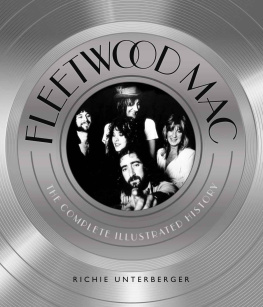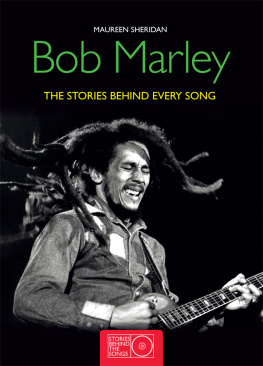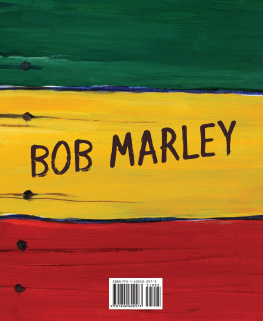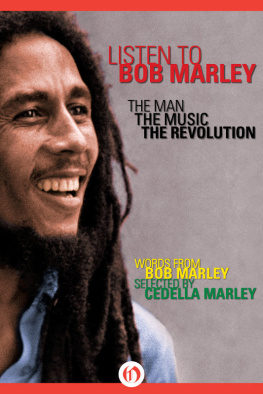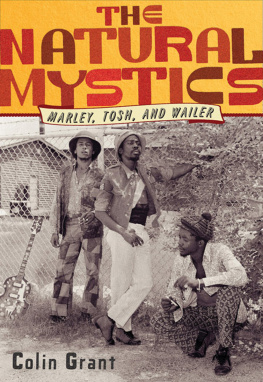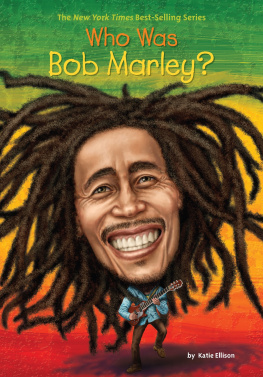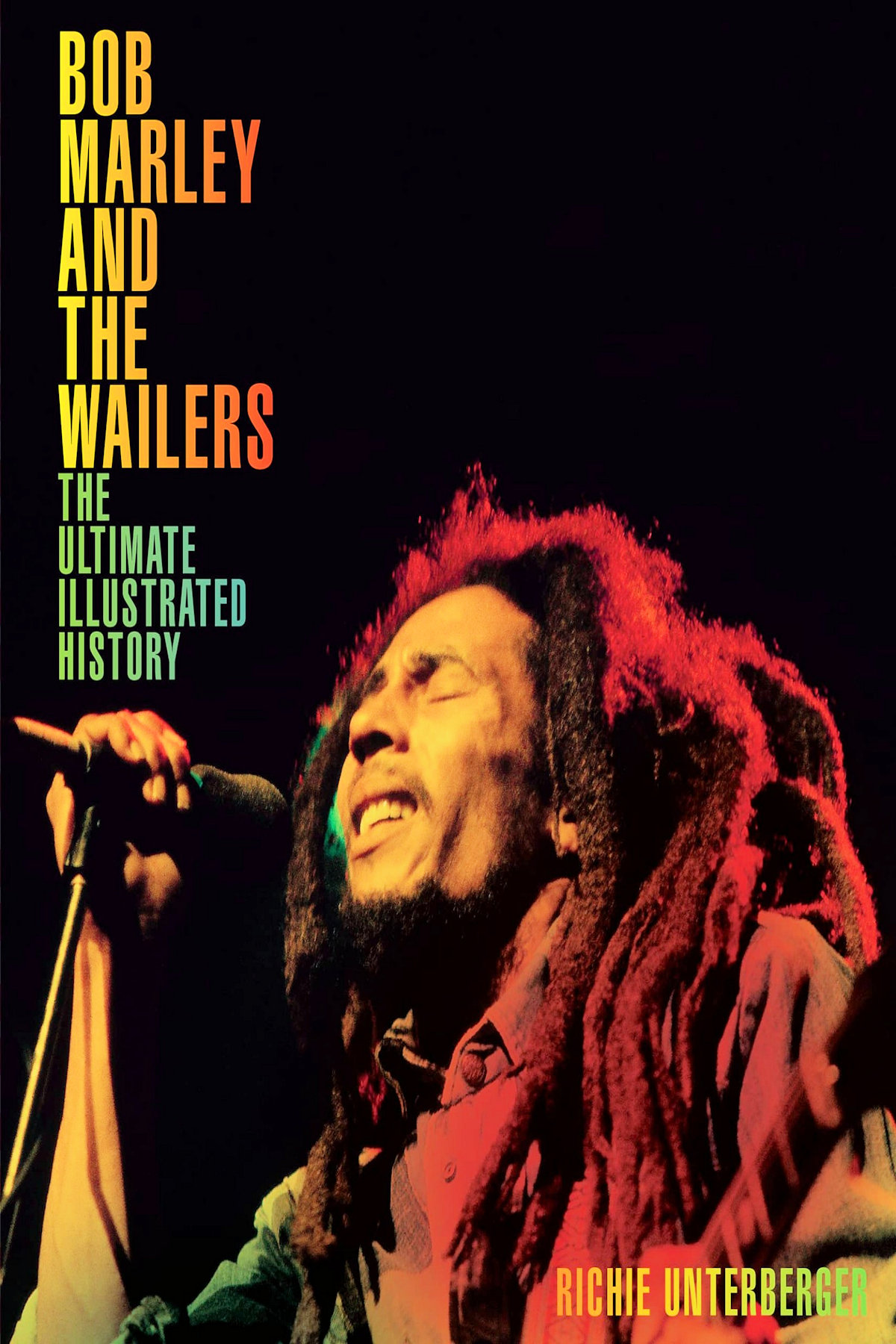BOB MARLEY AND THE WAILERS
THE ULTIMATE ILLUSTRATED HISTORY
RICHIE UNTERBERGER
with
GARTH CARTWRIGHT
PAT GILBERT
GILLIAN G. GAAR
DAVE HUNTER
HARVEY KUBERNIK
and
CHRIS SALEWICZ

Introduction
Pop music stars usually fade from public consciousness when two generations have passed since the end of their careers. Yet thirty-five years after Bob Marleys death, the reggae pioneer is bigger than ever.
His music is widely played all over the worldnot just in the North American and European nations responsible for the bulk of sales by English-speaking performers, but in every continent. His songs are performed by artists of all age groups and dozens of nationalities and ethnicities. His record salesimpressive, but not among the top echelon of superstars during his lifetimenow number in the hundreds of millions, even without counting the many pirated cassettes and CDs of his work that have circulated for decades, especially in Third-World countries. His best-selling disc, Legend: The Best of Bob Marley and the Wailers, has sold about twenty-five million copies, and as of this writing has spent more than four hundred consecutive weeks on the Billboard album chart.
Marley is everywhere, especially if you take into account the massive numbers of T-shirts, handbags, and other paraphernalia bearing his image. His most important legacy, however, is not in the massive merchandise he generates, but in his status as a symbol of empowerment for the underprivileged. Especially in Africa, hes revered as a spokesperson for the rights of the oppressed. He gained this position not only through the messages of his many songs, but also through the courageous stances he often took in his public life.
Even without these considerations, Marleys purely musical accomplishments were remarkable. With the Wailersespecially Peter Tosh and Bunny Wailer, who were nearly as important to the group as Marley in the bands first decadehe was crucial to developing and popularizing reggae, the music that remains Jamaicas most renowned export. He and the Wailers were the first reggae act to make albums as unified statements rather than more or less random collections of tracks. Those albums, in turn, were among the first reggae records to gain a wide listenership among rock fans outside of Jamaica, with reggae going on to influence countless musicians, rock and otherwise.
Marley has often been deified as a saint or even a Christ-like figure. But while his achievements were in some respects miraculous, he was, like any idolized artist, a very human and flawed figure. He was not an ideal husband or father, and did not always practice the peace and love extolled in many of his songs.
And despite his enormous fame and legacy, many of the details of his life remain surprisingly mysterious, especially for the years before his rise to international fame in the mid-1970s. Even some of the most prominent Marley biographies report events in different sequences, or give different months or even years for the same pivotal moment. One source, for instance, will report a Wailers single becoming a hit in Jamaica half a year before the month in which another source states it was recorded in the studio. Different close associates of Marley will have substantially different memories of what happened when or where, or why it happened.
Its virtually certain, however, that Marley was born on February 6, 1945, in the village of Nine Mile, Jamaica. Its even more certain that before leaving his teens, he helped spearhead a musical revolution that still echoes around the globe.
Staffordshire, England, June 22, 1978. TRINITY MIRROR/MIRRORPIX/ALAMY STOCK PHOTOS
BEGINNINGS 19451962
When Bob Marley was born, no one would have predicted that a boy of his background could become a musical revolutionary. His race, nationality, and modest family assets all seemed to work against the likelihood of his even rising out of poverty. Yet those same factors may well have fueled his burning desire to better not just himself, but the lot of millions of others with similar disadvantages.
One of those disadvantages was his color. Economic and political power in Jamaica was almost exclusively concentrated in a small white minority, often descendants of the British, who were still running Jamaica as a colony in which the gap between the ruling elite and a large black underclass was huge. Although his father was white, Marley was considered part of that underclass. It had been part of Jamaican life since slaves were forced to move to the country from their African homes starting in the early sixteenth century, though Jamaica finally abolished slavery in 1838.
Marleys mother, Cedella Malcolm, was reasonably well off by the standards of rural black Jamaicans. In the village of Nine Mile in the parish of Saint Ann, her father ran small businesses and owned some property. Her family became known to Norval Marley, a Jamaican of British descent who was, by most accounts, an overseer of land administered by the government in the area, though its been suggested that his position was more modest than that.
A group of Jamaican musicians plays a small local dance in 1946, the year after Marleys birth. MICHAEL OCHS ARCHIVES/GETTY IMAGES
Judge Not was credited to Marley when it was issued as his debut single. He was just sixteen.
Indeed, considerable mystery surrounds Norvals origins. He was known as Captain Marley, but doesnt seem to have attained that rank in his travels and various occupations in Jamaica, Britain, and Nigeria. When he first crossed paths with Cedella, he was aged anywhere from his late forties to his early sixties, depending on the account. Certainly the middle-aged man was quite a bit older than the teenaged girl, who was seventeen when she became pregnant by him. Conferring legitimacy on the child they were expecting, Captain Marley married Cedella in June 1944.
Although Norval moved to Kingston shortly afterward, he did name the son that Cedella gave birth to on February 6, 1945, Nesta Robert Marley. For much of his early youth, the future Bob Marley would be known as Nesta. He seldom saw his father, and when the youngster was sent to live with Norval at around the age of five, Captain Marley ended up arranging for his boy to live with a woman not even related to his parents. Cedella Marley ended up taking her son back to Nine Mile about a year later. Hed see little of his father before Norval Marley died in the mid-1950s.


